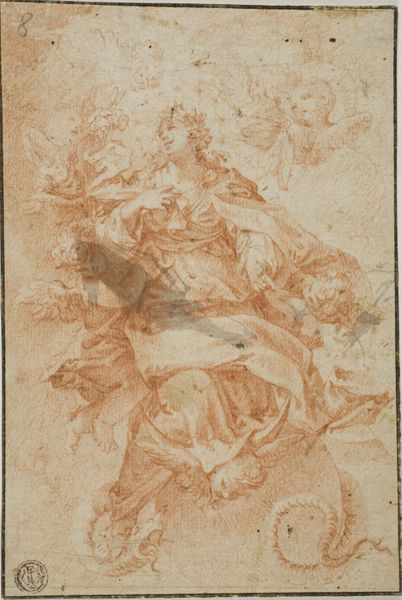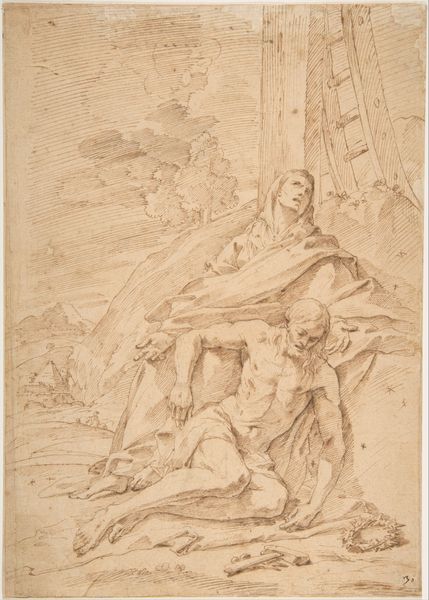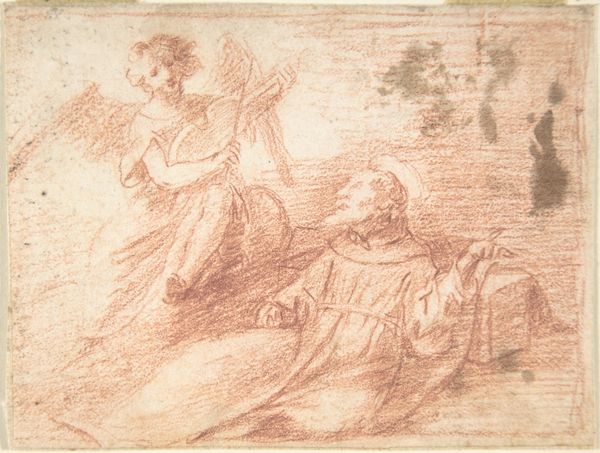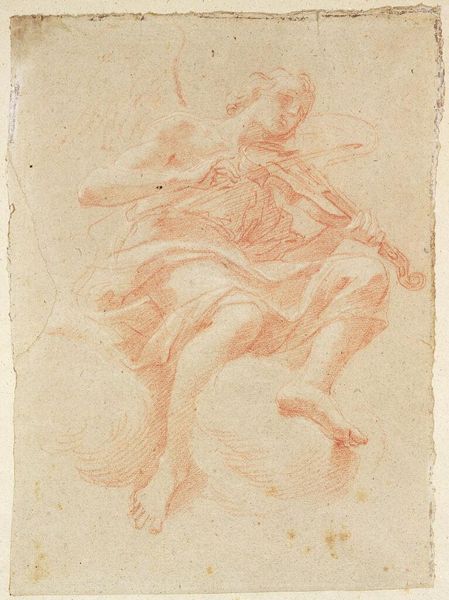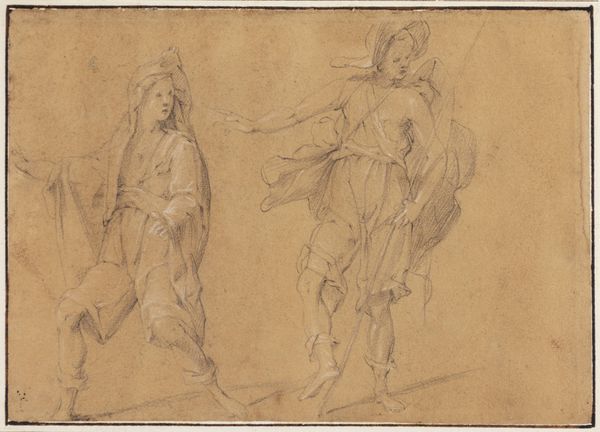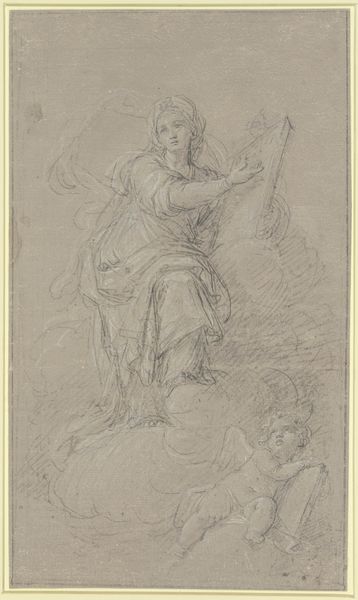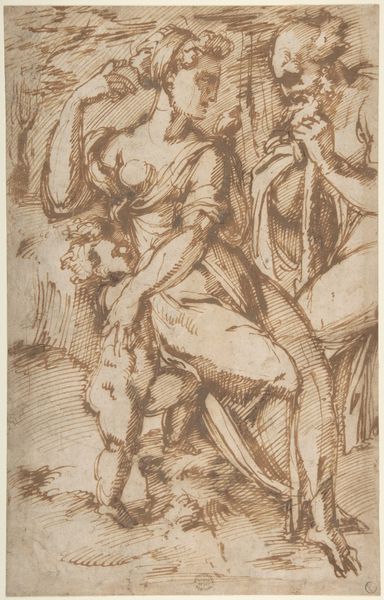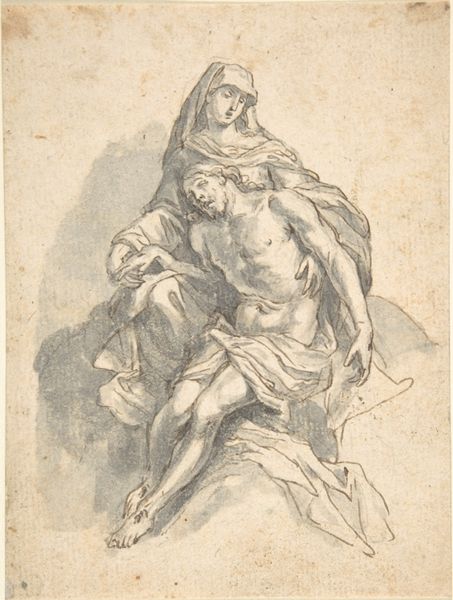
drawing, print, paper, chalk
#
drawing
# print
#
etching
#
figuration
#
paper
#
11_renaissance
#
chalk
#
history-painting
#
academic-art
Dimensions: 201 × 176 mm
Copyright: Public Domain
Curator: What a moving piece. Currently at The Art Institute of Chicago, this is Giuseppe Bartolomeo Chiari’s "Study," created sometime between 1710 and 1720. It’s rendered in chalk, etching, and drawing on paper. Editor: The color alone just washes over me. Sepia tones always whisper of memory and solemnity, like echoes from a lost world. I feel an immediate pull towards the profound grief emanating from this scene. Curator: It’s fascinating to consider the labor involved here. Chiari's choice of chalk and etching, mediums demanding meticulous preparation and skill, tells us about the importance he placed on this preliminary study, pushing the boundaries between 'sketch' and 'finished work'. We can practically see him in the studio, experimenting. Editor: Absolutely, it breathes and lives, it almost moves, with this incredible sense of dynamism; even though the scene itself seems frozen in a moment of utter sorrow. I wonder, was it common to prepare such detailed studies in this period? Curator: Very common. Academic art relied heavily on preparatory drawings, and this is an exquisite example. It would’ve served as a crucial step toward a larger painting, allowing the artist to work out compositions, light, and the figures' emotional expressions, like pieces of a puzzle that the great master pieced together on a later time. This piece reveals that whole chain of artistic creation, like a painting’s archaeological stratum! Editor: I love that—an archaeological stratum of emotion. I can't help but imagine what the final painting would look like, or the choices he would have made based on what he learnt through working through the drawing. There is so much soul already laid bare on this work by itself. Curator: Considering the socio-economic context, too, the cost of materials, the patronage system... everything points to the elite position art held, the means that supported its creation, and, thus, its dissemination among the privileged. We need to bear in mind this circuit of labor and value! Editor: You’re right; art as a luxury good. All the same, what touches me most remains the raw expression here. The slumped bodies, the downcast gaze... they speak to a universal understanding of loss. Thanks for letting me see this in a totally different light. Curator: Thank you. Exploring art through different lenses always brings fresh perspectives. And from materials and processes to feelings and memory we have woven an intimate view into a distant scene.
Comments
No comments
Be the first to comment and join the conversation on the ultimate creative platform.

